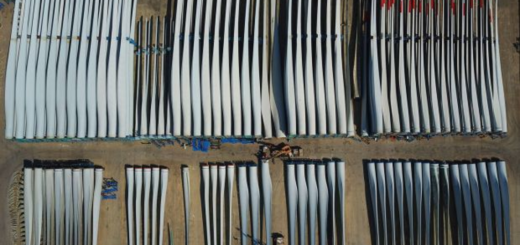DROWNING IN THE BIG GREEN POND
This is another guest article by Graeme, one of our regular contributing authors. It deals with the innate limiting factors of renewable energy sources, and though such considerations can be quite technical, it describes them in clear everyday language for the benefit of anyone who wishes to gain an understanding of the salient issues without first studying for a degree in electrical engineering – which I think covers most of us.
What does come across to me is how delicate a balance must be maintained to deliver a steady supply of electricity, and increasingly the intermittency of renewables is destabilising that equilibrium.
Pointman
Most of the Greens calling for more renewable energy capacity believe that somewhere there is a big pond of electricity, and so long as you feed in enough power to keep the level in the pond above zero, then it will keep flowing from that hole in the wall. That, they assume, will keep them warm in winter along with that smug glow of self-satisfaction at “saving the World”.
Any debate is stifled by their belief that carbon dioxide causes the Earth to warm, and also that renewable energy is the only way to reduce emissions. Thus they swiftly move to abusing anybody questioning their beliefs as evil deniers. There is no problem, they claim, in moving to 100% renewables for the electricity grid, thus exposing their ignorance. The concepts of reliability, base load and adaptability are foreign to their thinking, and they take for granted an inherent robustness that no experience can upset. Rational debate is avoided.
What is this Electricity Grid of which they are so ignorant? It is the result of 150 years of technical development with the aim of supplying a continuous supply of electricity to millions of customers. Over the years of successful operation it has become a reliable and necessary part of modern life. Not only does the right amount of electricity flow at the right voltage, the right amperage, and the right phase angle every second of every hour of every day of every year, but it is so reliable that various signals have been ‘grafted‘ onto it. Does your electric clock keep time, does your DVD player display the same time, do the street lights come on as it gets dark? Does your electric hot water service know when it can use cheaper overnight electricity to heat your morning wash? Say thank you to the grid regulators.
The misunderstood phrase ‘base load’ merely means the amount of electricity that MUST be available at any time of the day. It varies from day to night, from season to season but it has to be there at any time or there will be a blackout. Too little and the lights go out, too much electricity and the lights don’t work, nor do your clocks, TV, DVD, computer, refrigerator, washing machine or your microwave oven. To supply this the authorities use huge machines in various power stations all synchronized to a common degree.
As people turn off the entertainment and head for bed, some of the machines are set to deliver less power. They don’t stop, the generators don’t slow but continue to run at the same speed (3000 rpm. or 50 cycles usually outside of the USA). This is the rolling backup, ready to start supplying power at short notice, and this group comprises the coal, oil, nuclear and closed cycle gas turbines. They aren’t stopped and the boilers allowed to cool because it takes up to 3 days to ‘bring them back on-line’. A matter that comes into consideration when a complete unit is taken off-line for maintenance, hence the usual scheduling of that in parts of the year with lower demand.
The second ‘trick’ available is the reverse. These generators start (and stop) quite quickly. Open cycle gas turbines can be operating within minutes, as can diesel generators. Hydroelectricity operates within 30 seconds. Intelligent anticipation eliminates any stoppage in supply. Hydroelectricity has the additional benefit in many cases of being able to use excess electricity to ‘pump water back up hill’ for re-use. The only large-scale method of storing electricity.











